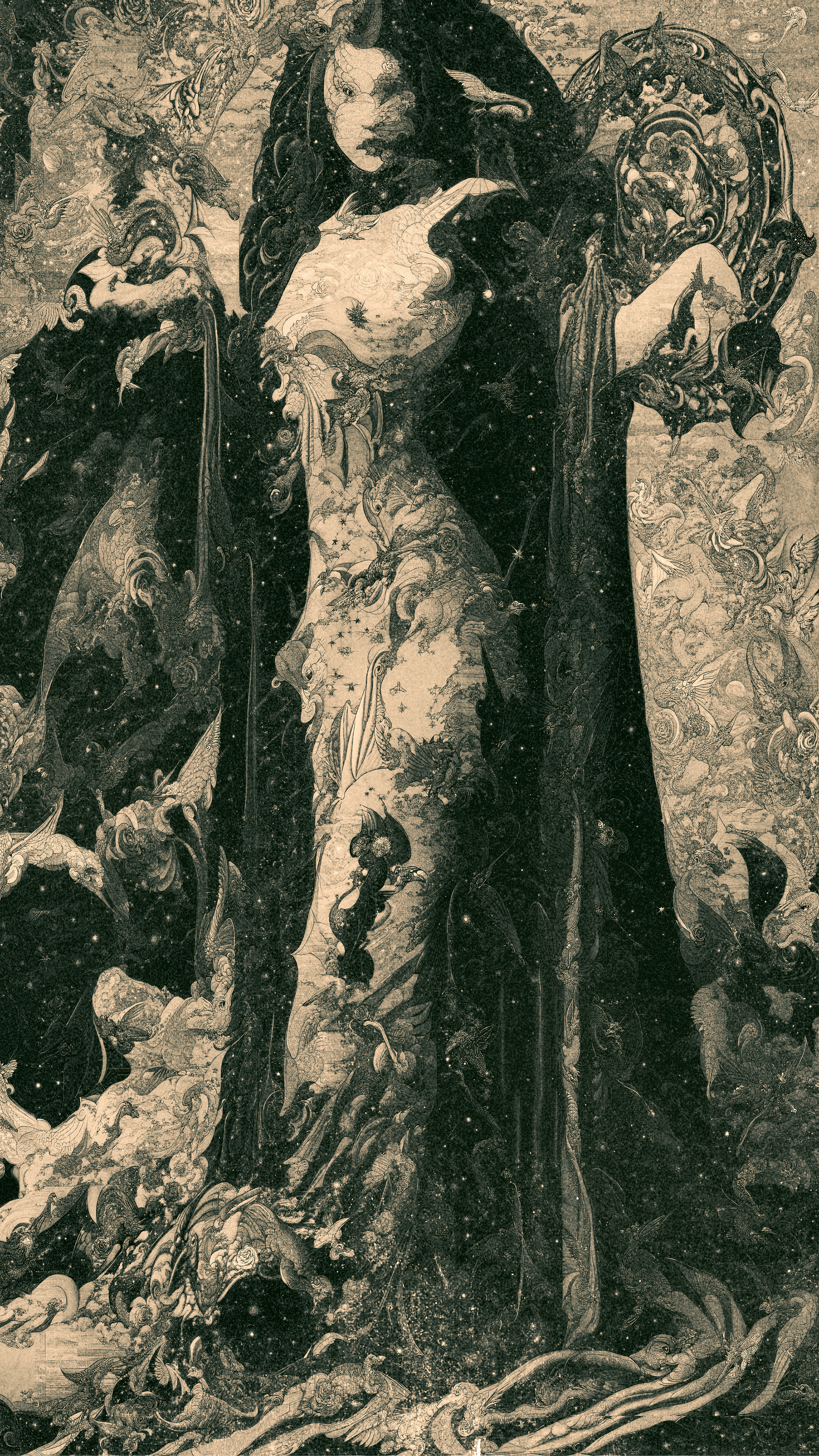

German astronomer, mathematician and philosopher Johannes Kepler wrote the book Somnium in 1608.
In this novel, which is regarded as the first science fiction book in history, Kepler mixes knowledge with fantasy in a time when the sciences were young and naive, and the line between hard truth and creative imagination was indistinct more often than not.
The pseudo-figurative creations of Ganbrood blend abstract and figurative shapes and patterns by amalgamating classic and modern elements of culture, art and mythology through the use of Deep Learning, image synthesis software.
Working with a multitude of different algorithms trained on billions of images, Ganbrood scrutinizes the essence of creativity and is trying to discover if what has always been regarded as exclusively human, could be replicated by artificial intelligence.
Using the algorithm as his silicon muse, his works are walking a mystifying tightrope between abstraction and figurativity, bred from the Latent Spaces where his fantasies and memories coincide with the vast multi-dimensional possibilities of the neural networks.
German astronomer, mathematician and philosopher Johannes Kepler wrote the book Somnium in 1608.
In this novel, which is regarded as the first science fiction book in history, Kepler mixes knowledge with fantasy in a time when the sciences were young and naive, and the line between hard truth and creative imagination was indistinct more often than not.
The pseudo-figurative creations of Ganbrood blend abstract and figurative shapes and patterns by amalgamating classic and modern elements of culture, art and mythology through the use of Deep Learning, image synthesis software.
Working with a multitude of different algorithms trained on billions of images, Ganbrood scrutinizes the essence of creativity and is trying to discover if what has always been regarded as exclusively human, could be replicated by artificial intelligence.
Using the algorithm as his silicon muse, his works are walking a mystifying tightrope between abstraction and figurativity, bred from the Latent Spaces where h
Zorya

- 価格米ドル価格数量有効期限送信元
- 価格米ドル価格数量最低価格差有効期限送信元
German astronomer, mathematician and philosopher Johannes Kepler wrote the book Somnium in 1608.
In this novel, which is regarded as the first science fiction book in history, Kepler mixes knowledge with fantasy in a time when the sciences were young and naive, and the line between hard truth and creative imagination was indistinct more often than not.
The pseudo-figurative creations of Ganbrood blend abstract and figurative shapes and patterns by amalgamating classic and modern elements of culture, art and mythology through the use of Deep Learning, image synthesis software.
Working with a multitude of different algorithms trained on billions of images, Ganbrood scrutinizes the essence of creativity and is trying to discover if what has always been regarded as exclusively human, could be replicated by artificial intelligence.
Using the algorithm as his silicon muse, his works are walking a mystifying tightrope between abstraction and figurativity, bred from the Latent Spaces where his fantasies and memories coincide with the vast multi-dimensional possibilities of the neural networks.
German astronomer, mathematician and philosopher Johannes Kepler wrote the book Somnium in 1608.
In this novel, which is regarded as the first science fiction book in history, Kepler mixes knowledge with fantasy in a time when the sciences were young and naive, and the line between hard truth and creative imagination was indistinct more often than not.
The pseudo-figurative creations of Ganbrood blend abstract and figurative shapes and patterns by amalgamating classic and modern elements of culture, art and mythology through the use of Deep Learning, image synthesis software.
Working with a multitude of different algorithms trained on billions of images, Ganbrood scrutinizes the essence of creativity and is trying to discover if what has always been regarded as exclusively human, could be replicated by artificial intelligence.
Using the algorithm as his silicon muse, his works are walking a mystifying tightrope between abstraction and figurativity, bred from the Latent Spaces where h